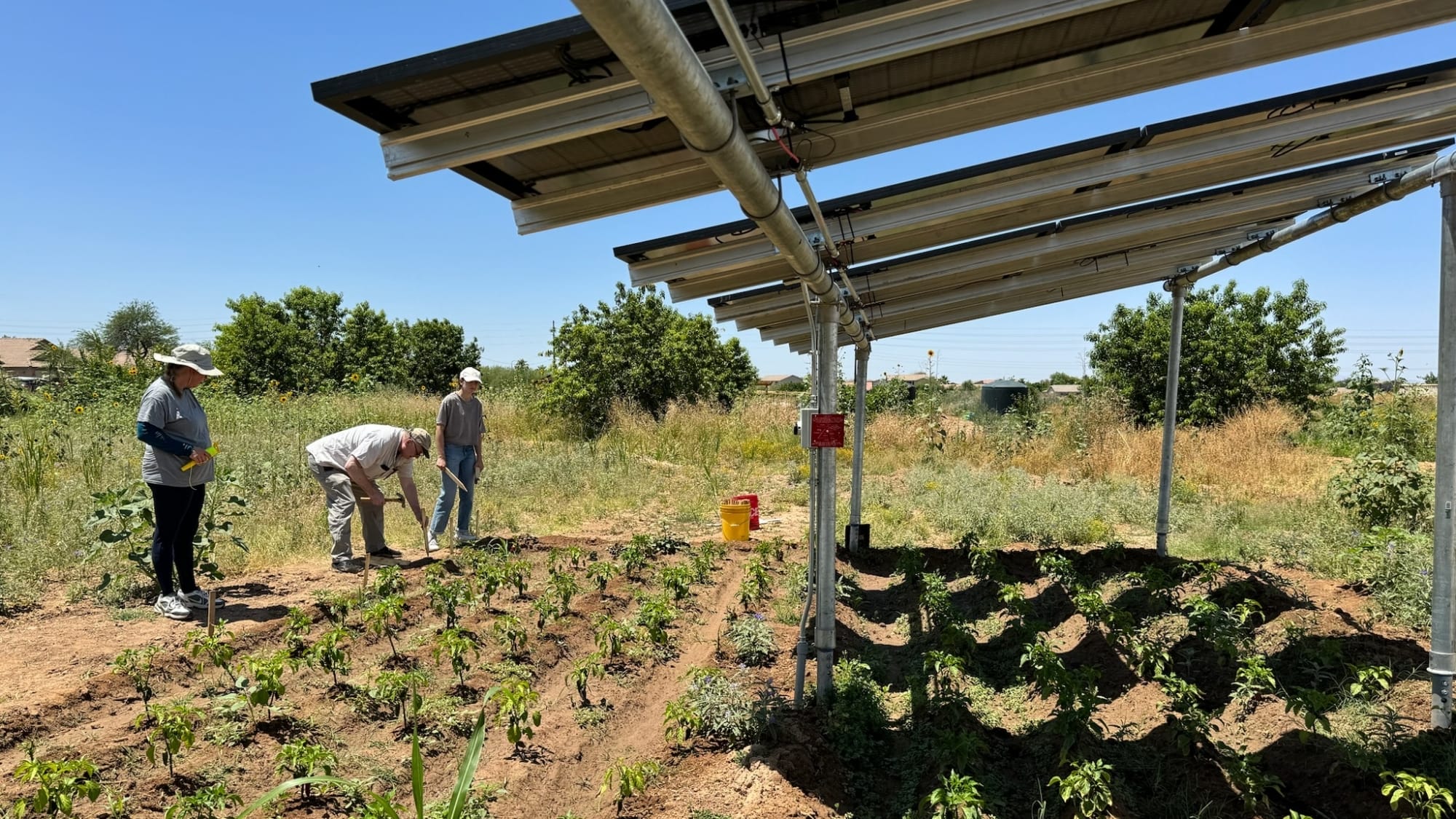Rows of crops grow under solar panels while farmers work on the side of Spaces of Opportunity’s agrivoltaic plot in Phoenix. Photo courtesy of Sarah Bendok
BY AMAIA J. GAVICA | CRONKITE NEWS
WASHINGTON – For 31 straight days last summer, temperatures in Phoenix hit or topped 110 degrees, the longest such streak ever. That searing Arizona heat dehydrates crops and evaporates water the state needs to conserve.
Creating shade is one way to combat the problem.
By using solar panels, farmers can simultaneously protect their plants, save water and lower their energy bills – and some are doing just that with help from federal programs designed to encourage this sustainable method of growing.
Photovoltaic panels are placed above the crops, harnessing the sun’s energy while providing valuable shade.
“The solar arrays … will help shade and help reduce our water use and improve our water-use efficiency, which is very important in places like New Mexico and Arizona,” said Derek Whitelock, supervisory agricultural engineer at the U.S. Department of Agriculture. “Plants don’t need really as much sun as they get here in the West.”
Three-fourths of Arizona’s water supply goes to agricultural irrigation, according to the Arizona Department of Water Resources. The Colorado River Basin is in a Tier 1 water shortage, requiring restrictions for agricultural users. As drought continues, farmers are searching for new sustainable methods of growing.
The University of Arizona, in partnership with the U.S. Department of Agriculture, has created an agrivoltaics research site to study the ways that solar farming could benefit Arizona.
”You are getting significant water savings,” said Greg Barron-Gafford, the UArizona professor leading the effort.
A study led by Barron-Gafford found that when irrigating every other day on an agrivoltaic plot, soil moisture remained 15% higher than on a nearby plot without solar panels.
Some plants actually produced more with less water. Cowpea beans, for example – also known as black-eyed peas – had a higher crop yield when grown in the shade of solar panels. Full sun required twice as much water, it turned out.
“Agrivoltaics actually helped us get even more bean production because now we were providing the shade, so they were less stressed,” Barron-Gafford said.










